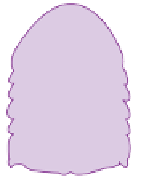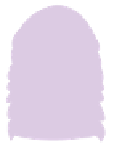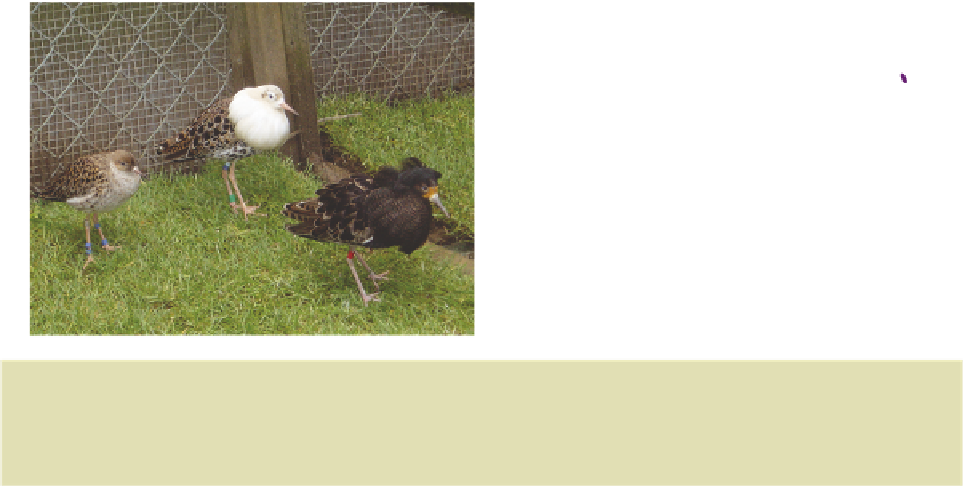Biology Reference
In-Depth Information
(a)
(b)
a.
b.
c.
4 mm
Fig. 5.18
Alternative genetic mating strategies. (a) In the ruff there are three male strategies: territorial
males (right) have dark ruffs, satellite males (centre) have white ruffs and female mimics (left) have no ruffs.
Photo © Susan McRae. (b) In the marine isopod
Paracerceis sculpta
there are three male morphs which differ
in size and behaviour; from left to right: alpha, beta and gamma males. From Shuster (1989).
The most likely way for this to come about is by frequency dependent selection. Let us
return to Fig. 5.9b, where producers and scroungers could coexist at a stable frequency.
In the spice finches the equilibrium was achieved by behavioural decision making. In an
evolutionary game involving genetic alternatives the equilibrium would come about by
natural selection. Imagine, for example, that the proportion of the genetic alternative
'scrounger' was below x in Fig. 5.9b. The scrounger morph has higher fitness than the
producer morph, so it will be favoured by selection and will increase in frequency across
the generations. As it does so, the pay-off for scrounging will decrease (more and more
competition between scroungers for resources produced by producers). On the other
hand, beyond x producers do better so they now increase in frequency (and so the
proportion of scroungers decreases). At x, there is a stable mixture of the two genetic
morphs because here each has the same reproductive success.
In theory, we might expect this kind of genetic polymorphism to be rare in nature
because conditional strategies with alternative tactics would enable competitors to fine
tune their behaviour to fit local environmental conditions and so would be favoured by
selection. Nevertheless, there are some marvellous cases of alternative genetic strategies;
some examples are now discussed.
Frequency
dependent
selection can lead
to equal success
for alternative
strategies
Ruffs: fighters, satellites and female mimics
The ruff is a shorebird with a remarkable difference between males and females (Fig. 5.18a).
Males are much larger and in the spring they develop ornamental neck ruffs and head tufts
and aggregate on display grounds (leks - see Chapter 10) to compete for females. The
scientific name
Philomachus pugnax
signifies 'love of fighting' and it describes well the
behaviour of the majority of the males; they have dark ruffs and tufts and they fight to
















































































































































